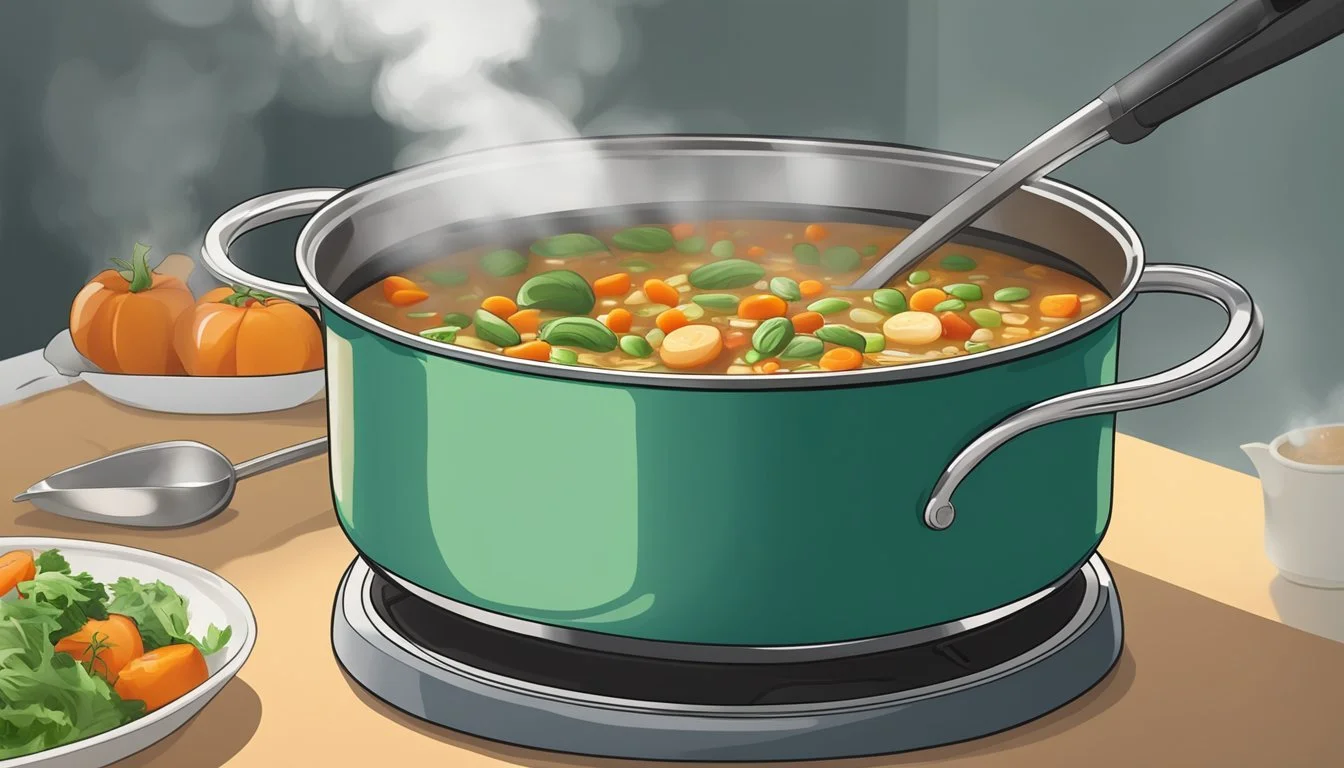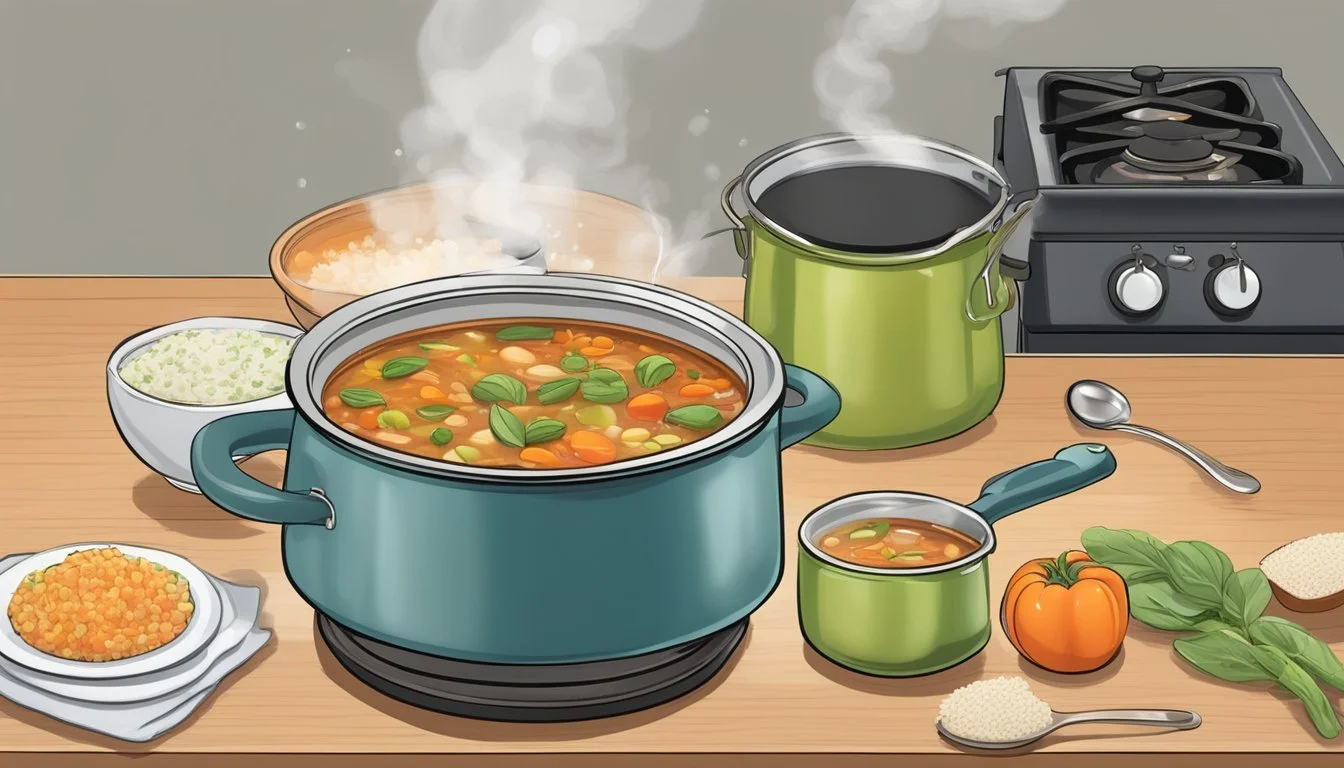How to Reheat Gluten-Free Minestrone Soup for Optimal Taste and Texture
There's nothing quite as comforting and hearty as a bowl of minestrone soup, especially when it's healthy and gluten-free. Whether you’re enjoying a cozy night in or looking to indulge in a bit of Italian comfort food, reheating this soup properly can make all the difference. To maintain the soup's texture and flavor, reheat it using short intervals in the microwave, stirring frequently to ensure even heat distribution.
For larger portions or a more gradual method, a slow cooker set to the 'Warm' setting works wonders, particularly for preserving the tenderness of the vegetables. Reheating on the stovetop is another reliable method, allowing for gentle and controlled warming that can revive the soup's robust flavor. Whichever method you choose, the key is to heat your gluten-free minestrone soup slowly to keep its delicious and wholesome characteristics intact.
Understanding Minestrone Soup
Minestrone soup is a versatile and hearty dish that originates from Italy. It includes a medley of vegetables, beans, and sometimes pasta, making it suitable for various dietary preferences including gluten-free, vegan, and vegetarian diets.
Origins and Variations
Minestrone soup has its roots in Italian cuisine, traditionally crafted as a "poor man's soup" using available seasonal vegetables. Over the years, it evolved, with regional variations incorporating local ingredients.
In Northern Italy, it might include rice or barley, whereas in the South, pasta is common. Classic ingredients often found in minestrone include carrots, zucchini, tomatoes, and celery.
Key Ingredients
Key ingredients in minestrone soup usually include a flavorful base of onion, garlic, and olive oil. Carrots, celery, and zucchini are staples for their nutritional value and flavor.
Tomatoes, either canned or fresh, add richness. Beans, such as kidney or cannellini, increase protein and make the dish hearty. Italian seasoning and vegetable broth elevate the overall taste.
Gluten-Free Consideration
For those with celiac disease or gluten intolerance, gluten-free minestrone is a perfect choice. Replace traditional pasta with gluten-free pasta options.
Check labels for hidden gluten in broths or seasonings. Minestrone soup is naturally gluten-free when prepared with pure ingredients and avoids wheat or barley grains. This makes it an excellent choice for maintaining variety in a gluten-free diet without compromising flavor.
Preparation Before Reheating
Ensuring the best flavor and consistency of gluten-free minestrone soup when reheating depends on storing it correctly and preparing it properly.
Proper Storage Techniques
Proper storage is key to maintaining the soup's taste and consistency. Store leftovers in the fridge in an airtight container. This prevents the soup from absorbing unwanted odors and flavors. Fridge storage helps the soup stay fresh for up to 3-4 days.
Freezing is another option for longer storage. Portion the soup into airtight, freezer-safe containers. Leave some space at the top of the container to allow for expansion when freezing. It's best to store the pasta separately if possible, as freezing can alter its texture. Label containers with the storage date to keep track.
Pre-Reheat Tips
Before reheating, take a few steps to ensure the soup reheats evenly and retains its flavor. If the soup was frozen, defrost it in the fridge overnight. This method is safer and helps maintain the soup's quality.
Stir the soup well to redistribute ingredients and flavors that may have settled during storage. If the pasta was stored separately, add it back into the soup before reheating.
Heat the soup gently on the stove over medium heat, stirring occasionally. This prevents sticking and ensures even heating. If using a microwave, reheat small portions in intervals of 30 seconds, stirring in between to distribute the heat.
Reheating Gluten-Free Minestrone Soup
Reheating gluten-free minestrone soup can be done effectively using either the stovetop or microwave. Proper methods ensure the soup maintains its texture and flavor without becoming mushy or overcooked.
Stovetop Method
Reheating on the stovetop is preferred for larger portions and retains the soup’s quality.
Use a Dutch oven or a large pot.
Pour the soup into the pot and set the heat to medium-low.
Stir occasionally to evenly distribute the heat and prevent the bottom from burning.
Add a small amount of liquid (water or broth) if the soup is too thick.
Simmer gently until the soup reaches the desired temperature.
Taste and adjust seasonings if needed.
This method helps maintain the vegetables’ texture and avoids overcooking.
Microwave Method
The microwave method offers convenience, especially for smaller portions.
Place the soup in a microwave-safe bowl.
Cover the bowl with a microwave-safe lid or a microwave-safe plate to avoid splatters.
Reheat in 30-second intervals, stirring in between each interval.
Check after each interval to ensure even heating.
Continue until the soup is evenly heated through.
This process minimizes the risk of separation and prevents overcooked vegetables.
Avoiding Common Reheating Mistakes
To avoid common reheating mistakes:
Overheating: Heat gently to avoid making vegetables mushy.
Separation: Stir frequently to maintain a uniform consistency.
Dry Soup: Add a bit of broth or water to replace any lost liquid.
Uneven Heating: Stirring during reheating ensures all parts of the soup are warmed evenly.
Using the right techniques ensures your gluten-free minestrone soup stays delicious and retains its initial texture and flavor even after reheating.
Enhancing and Serving
Enhancing gluten-free minestrone soup elevates its flavor profile and adds a personalized touch. Serving it with complementary additions makes the meal complete and engaging.
Adjusting Seasonings
When reheating gluten-free minestrone soup, revisiting the seasonings is crucial. Salt and black pepper are essential, adjusting to taste as these can diminish during storage. Adding a pinch of Italian seasoning or thyme can revive the herbal notes.
Fresh parsley enhances freshness and color. Sprinkling some parmesan cheese just before serving can add a savory depth. Drizzling a bit of olive oil on top imparts a smooth finish and richness.
Experimenting with red pepper flakes can introduce a mild heat, balancing the soup's hearty ingredients.
Complementing Additions
Pairing the reheated soup with sides enhances the dining experience. Crusty bread or gluten-free rolls serve as the perfect companion to soak up the flavorful broth. Garlic bread is another excellent choice, adding a crunchy texture and a garlicky aroma.
Garnishing with fresh herbs like basil or cilantro can further brighten the dish. Green onions or chives can offer a subtle crunch and faint sharpness. Consider adding a slice of lemon on the side to squeeze in for a tangy zest.
These additions not only complement the soup but make it a more inviting and complete meal.
Health and Nutrition
Gluten-free minestrone soup offers notable dietary benefits and a rich nutritional profile. It can support diverse health goals, especially for those with celiac disease or gluten intolerance.
Benefits of Gluten-Free Soup
For individuals with celiac disease or gluten sensitivity, gluten-free soup is crucial. Avoiding gluten helps prevent undesirable symptoms like bloating, fatigue, and digestive issues.
Gluten-free minestrone soup is made from nutritious vegetables, which are high in essential vitamins and minerals.
Vegetables like zucchini, carrots, celery, and tomatoes are rich in vitamins A, C, and K. The inclusion of beans enhances protein and fiber content, supporting muscle health and digestion.
By choosing gluten-free options, individuals can maintain a healthy diet without sacrificing the hearty flavors of traditional minestrone.
Nutritional Profile
A balanced portion of gluten-free minestrone soup provides a range of nutrients. Protein from beans helps build and repair tissues. Fiber aids in digestive health and promotes satiety.
Vegetables contribute to a high intake of antioxidants, which protect cells from damage. The soup also includes essential minerals like potassium and magnesium, crucial for heart health and muscle function.
Most recipes incorporate a variety of vegetables, ensuring that each serving is low in calories yet dense in nutrients. This makes it a valuable addition to a healthy diet.
Gluten-free noodles or omitting pasta makes the soup suitable for those with gluten restrictions, ensuring safety without compromising nutritional quality.






